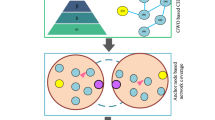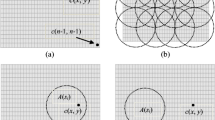Abstract
In wireless sensor networks (WSNs), coverage is a significant indicator of the quality of service. However, full coverage is not feasible to achieve due to coverage holes (CH) in the targeted area. CH occurs for many reasons, such as energy depletion, occlusions and random deployment of nodes. Most of the existing CH restoration methods have huge limitations like high energy consumption (EC), low coverage ratio (CR) and less network lifetime. To address these issues, an Enhanced Mobile Sink-based Coverage Optimization and Link-stability Estimation based Routing (EMSCOLER) protocol is proposed in this paper. The proposed EMSCOLER provides a solution to the coverage restoration issue optimally and avoids network transmission faults. This work consists of two phases such as coverage restoration and Link Stability Estimation based Routing (LSER). Initially, the grid is constructed in the coverage area and randomly deploys the nodes over the grid based coverage area. Grid-based Red Deer Simulated Annealing (GRDSA) model detects the CH in the sensing field and moves the redundant nodes to the hole area to solve the restoration problem. LSER algorithm estimates the link quality and chooses the relay nodes for the transmission of data in order to maximize the whole network lifetime and provide an energy efficient routing. MATLAB tool is used for implementing the proposed protocol. The results of the proposed EMSCOLER are analysed using CR, EC, average residual energy (ARE), moving EC and network lifetime by comparing with the state of the art techniques. The proposed EMSCOLER approach achieved 98.53% CR, 5.842 J EC, 5.94 J moving EC, 0.1980 J ARE and 99.61% network lifetime. From the experimental analysis, the proposed method achieved better results than other techniques. Therefore, the proposed approach can effectively solve the coverage restoration problem and perform energy efficient routing.










Similar content being viewed by others
Availability of data and material (data transparency)
Data sharing is not applicable to this article as no new data were created or analyzed in this study.
Code availability
Custom code.
References
Priyadarshi, R., & Gupta, B. (2020). Coverage area enhancement in wireless sensor network. Microsystem Technologies, 26(5), 1417–1426.
Singh, P., & Chen, Y. C. (2020). Sensing coverage hole identification and coverage hole healing methods for wireless sensor networks. Wireless Networks, 26(3), 2223–2239.
Zygowski, C., & Jaekel, A. (2020). Optimal path planning strategies for monitoring coverage holes in Wireless Sensor Networks. Ad Hoc Networks, 96, 101990.
Koriem, S. M., & Bayoumi, M. A. (2018). Detecting and measuring holes in wireless sensor network. Journal of King Saud University-Computer and Information Sciences, 32, 909–916.
Yi, L., Deng, X., Zou, Z., Ding, D., & Yang, L. T. (2018). Confident information CH detection in sensor networks for uranium tailing monitoring. Journal of Parallel and Distributed Computing, 118, 57–66.
Feng, J., & Chen, H. (2019). Healing coverage holes for Big Data Collection in Large-Scale Wireless Sensor Networks. Mobile Networks and Applications, 24(6), 1975–1984.
Hu, N., Feng, Y., Qi, Y., & Yu, X. (2020). The coverage holes detecting and healing based on the improved harmony search algorithm in wireless sensor network. In: 2020 Chinese Control and Decision Conference (CCDC), IEEE, pp. 2333–2336.
Meena, N., & Singh, B. (2020). Analysis of coverage hole Problem in Wireless Sensor Networks. Smart Systems and IoT: Innovations in Computing (pp. 187–196). Springer.
Alrabea, A., Alzubi, O. A., & Alzubi, J. A. (2019). A task-based model for minimizing energy consumption in WSNs. Energy Systems 1–18.
Khedr, A. M., Osamy, W., & Salim, A. (2018). Distributed coverage hole detection and recovery scheme for heterogeneous wireless sensor networks. Computer Communications, 124, 61–75.
Alzubi, J. O. A., Alzubi, O., & Al-Shugran, M. (2015). Intelligent and dynamic neighbourhood entry lifetime for position-based routing protocol using fuzzy logic controller. International Journal of Computer Science and Information Security, 14(1), 118.
Deng, X., Tang, Z., Yang, L. T., Lin, M., & Wang, B. (2017). Confident information coverage hole healing in hybrid industrial wireless sensor networks. IEEE Transactions on Industrial Informatics, 14(5), 2220–2229.
Alrabea, A., Alzubi, O., & Alzubi, J. (2020). An enhanced Mac protocol design prolong sensor network lifetime. International Journal on Communications Antenna and Propagation (IRECAP) 10(1).
Almomani, O., Al-Shugran, M., Alzubi, J., & Alzubi, O. (2015). Performance evaluation of position-based routing protocols using different mobility models in MANET. International Journal of Computer Applications, 119(3), 43–48.
Sangwan, A., & Singh, R. P. (2017). Coverage hole detection and healing to enhance coverage and connectivity in 3D spaces for WSNs: A mathematical analysis. Wireless Personal Communications, 96(2), 2863–2876.
Sahoo, P. K., Chiang, M. J., & Wu, S. L. (2016). An efficient distributed coverage hole detection protocol for wireless sensor networks. Sensors, 16(3), 386.
Amgoth, T., & Jana, P. K. (2017). Coverage hole detection and restoration algorithm for wireless sensor networks. Peer-to-Peer Networking and Applications, 10(1), 66–78.
Khelil, A., Beghdad, R., & Khelloufi, A. (2020). 3HA: hybrid hole healing algorithm in a wireless sensor networks. Wireless Personal Communications, 1–19.
Zhang, G., Qi, C., Zhang, W., Ren, J., & Wang, L. (2017). Estimation and healing of coverage hole in hybrid sensor networks: A simulation approach. Sustainability, 9(10), 1733.
Baha, R., Ullash, S. (2020). Detecting and healing area coverages holes in homogeneous wireless sensor network: Survey. arXiv preprint arXiv:2 005.02492.
Wang, J., Ju, C., Kim, H. J., Sherratt, R. S., & Lee, S. (2019). A mobile assisted coverage hole patching scheme based on particle swarm optimization for WSNs. Cluster Computing, 22(1), 1787–1795.
Xue, X., Sun, W., Wang, J., Li, Q., Luo, G., & Yu, K. (2020). RVFL-LQP: RVFL-based link quality prediction of wireless sensor networks in smart grid. IEEE Access, 8, 7829–7841.
Yarinezhad, R. (2019). Reducing delay and prolonging the lifetime of wireless sensor network using efficient routing protocol based on mobile sink and virtual infrastructure. Ad Hoc Networks, 84, 42–55.
Khalifa, B., Al Aghbari, Z., & Khedr, A. M. (2020). A distributed self-healing coverage hole detection and repair scheme for mobile wireless sensor networks. Sustainable Computing: Informatics and Systems, 30, 100428.
Gou, P., Mao, G., Zhang, F., & Jia, X. (2020). Reconstruction of coverage hole model and cooperative repair optimization algorithm in heterogeneous wireless sensor networks. Computer Communications, 153, 614–625.
So-In, C., Nguyen, T. G., & Nguyen, N. G. (2019). An efficient coverage hole -healing algorithm for area-coverage improvements in mobile sensor networks. Peer-to-Peer Networking and Applications, 12(3), 541–552.
Zhang, J., Chu, H., & Feng, X. (2020). Efficient coverage hole detection algorithm based on the simplified rips complex in wireless sensor networks. Journal of Sensors, 2020, 1–13.
Feng, X., Zhang, X., Zhang, J., & Muhdhar, A. A. (2019). A coverage hole detection and repair algorithm in wireless sensor networks. Cluster Computing, 22(5), 12473–12480.
Huang, Z., Yee, L., Ang, T. F., Anisi, M. H., & Adam, M. S. (2019). Improving the accuracy rate of link quality estimation using fuzzy logic in mobile wireless sensor network. Advances in Fuzzy Systems, 2019, 1–13.
Verma, M., & Sharma, S. (2018). A greedy approach for coverage hole detection and restoration in wireless sensor networks. Wireless Personal Communications, 101(1), 75–86.
Babu, M. V., Alzubi, J. A., Sekaran, R., Patan, R., Ramachandran, M., & Gupta, D. (2020). An improved IDAF-FIT clustering based ASLPP-RR routing with secure data aggregation in wireless sensor network. Mobile Networks and Applications. https://doi.org/10.1007/s11036-020-01664-7
Omar, A. (2016). Dynamic and reactive multi-objective routing decision in position-based routing protocols. IJCSNS, 16(6), 62–74.
Priyadarshi, R., Singh, L., Singh, A. & Thakur, A. (2018). SEEN: Stable energy efficient network for wireless sensor network. In: 2018 5th International Conference on Signal Processing and Integrated Networks (SPIN), IEEE, pp 338–342.
Polastre, J., Hill, J. & Culler, D. (2004). Versatile low power media access for wireless sensor networks. In Proceedings of the 2nd International Conference on Embedded Networked Sensor Systems. pp 95–107.
Dahiya, S., & Singh, P. K. (2018). Optimized mobile sink based grid coverage-aware sensor deployment and link quality based routing in wireless sensor networks. AEU-International Journal of Electronics and Communications, 89, 191–196.
Funding
No Funding.
Author information
Authors and Affiliations
Contributions
Authors have equally contributed.
Corresponding author
Ethics declarations
Conflicts of interest
No conflict of interest.
Additional information
Publisher's Note
Springer Nature remains neutral with regard to jurisdictional claims in published maps and institutional affiliations.
Rights and permissions
About this article
Cite this article
Juneja, S., Kaur, K. & Singh, H. An intelligent coverage optimization and link-stability routing for energy efficient wireless sensor network. Wireless Netw 28, 705–719 (2022). https://doi.org/10.1007/s11276-021-02818-5
Accepted:
Published:
Issue Date:
DOI: https://doi.org/10.1007/s11276-021-02818-5




